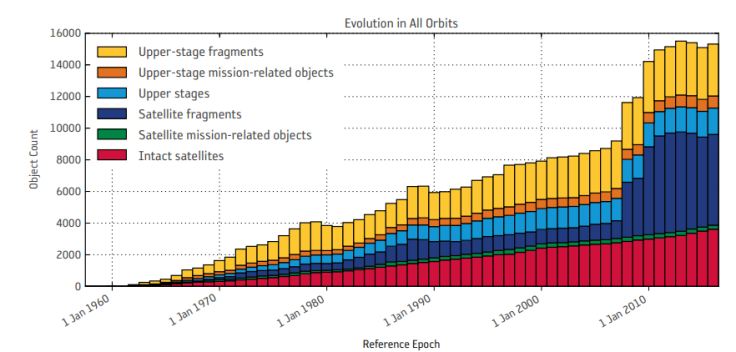Space Debris: ESA To Host Conference On Threats Posed By Orbiting Space Junk

The problem of space debris is not going away any time soon — not unless immediate steps are taken to curb its growth and mitigate the risk posed by the junk already in orbit. In a global effort aimed at drafting and implementing countermeasures, the European Space Agency (ESA) will hold the 7th European Conference on Space Debris in Darmstadt, Germany, between April 18 and 21.
According to the ESA, the conference will provide "a unique forum for leading scientists, engineers, managers, space operators, industry, academia and policy-makers from all major spacefaring nations."
"Highlight talks will address acute issues like the current practice in implementing debris avoidance measures, novel concepts for the active removal of debris, and the deployment of large constellations of several thousand satellites for telecommunications," the ESA said in a statement released April 4. "Finally, the proliferation of small satellites, CubeSats and nanosatellite swarms will be addressed."
The conference can be watched live here.
Of the estimated 18,000 regularly tracked objects currently locked in orbit around Earth, only 1,100 are functional spacecraft. The remaining are fragments created due to explosions and collisions of satellites or discarded rocket stages. This orbital junk can travel at speeds of up to 17,500 miles per hour — fast enough to cause serious damage to satellites and even the International Space Station.

And this is just the debris that scientists have been able to track. In addition to this, it is estimated that about 200 million objects larger than one millimeter are also locked in orbit.
“Debris hitting debris creates more debris, so you have this cascade effect and end up with so much space debris that it becomes a real danger to operational satellites and new launches,” Steve Gower, general manager of the Space Environment Research Centre in Canberra, Australia, told Bloomberg in November. “Every time we launch a satellite, we need to plan a path to avoid space junk.”
The ESA conference comes just over two months after an ambitious mission to clean up some of this debris — launched by Japan's space agency JAXA — failed. The mission involved launching a cargo ship carrying an electrodynamic tether made of aluminum and stainless steel that, once deployed, was supposed to use the electricity generated by its motion through Earth’s magnetic field to slow the debris down and push it into a lower orbit, where it would have entered the atmosphere and burned up.
The tether, however, failed to deploy.
© Copyright IBTimes 2025. All rights reserved.





















